Everything you need to safely take photos of the 2024 total solar eclipse, according to photographers
Content is created by CNN Underscored’s team of editors who work independently from the CNN newsroom. When you buy through links on our site, CNN and its syndication partners may earn a commission. Learn more
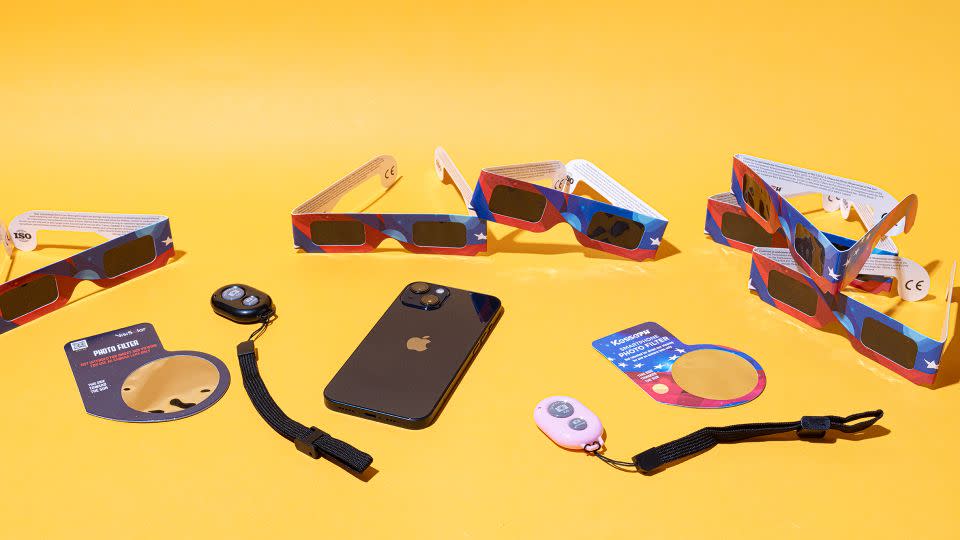
Solar eclipses are relatively common, but total solar eclipses only take place an average of two times every three years, which is why you should be figuring out how to take photos of the April 2024 total solar eclipse right now.
The next total solar eclipse will occur on April 8, 2024, for large swaths of North America including Mexico, the United States and Canada. The next one after that won’t occur in North America until Aug. 23, 2044.
If you already know how rare and special the 2024 total solar eclipse really is, or if you’re just now finding out, you may be wondering how you can capture the momentous occasion without harming your vision. We reached out to experts and photographers to find strategies that can help you take an exceptional photo of the solar eclipse while protecting your precious eyesight. Here’s what they said.
How to take photos of the solar eclipse
Sara Lowthian-Hanna, who serves as lead contract photographer at NASA’s Glenn Research Center, points out that preparation and practice are necessary to photograph a total eclipse. Part of that involves making sure you have the right equipment to protect your camera and your eyes.
First off, you’ll want to make sure you purchase solar eclipse glasses that are ISO-certified. Glasses with this certification must meet specific safety standards set by the International Organization for Standardization (ISO), which ensures you can focus your energy on capturing images without damaging your eyesight.
Assuming you plan to capture the total solar eclipse with your smartphone, Indiana University professor of astronomy Caty Pilachowski recommends downloading the Totality app. This app is free for iPhone and Android, and it gives the precise time for the eclipse at any location so you can know when to be ready.
Pilachowski says other equipment that can be helpful includes a tripod to mount the camera and a remote shutter control. Lowthian-Hanna also adds that, just like your eyes, your camera can be damaged if you point it directly at the sun. To prevent this, use a solar filter to protect your equipment when viewing and setting up your shot through the viewfinder. However, you should know that the solar filter can be removed from the camera during totality. This is when the moon is completely eclipsing the sun, so the camera cannot be harmed by the sun’s harmful rays.
Lowthian-Hanna also points out that it will be completely dark during totality, and you won’t want to be fumbling around and wasting time trying to find the dials and buttons on the camera. To avoid this, some early preparation can help. “Practice using your equipment with your eclipse glasses on and know exactly where all the settings are on the camera and how to control them,” she says.
Whether you’re using a fancy DSLR or your smartphone, here are some useful products to help you capture that perfect shot.
Solar Snap Eclipse App and Bundle
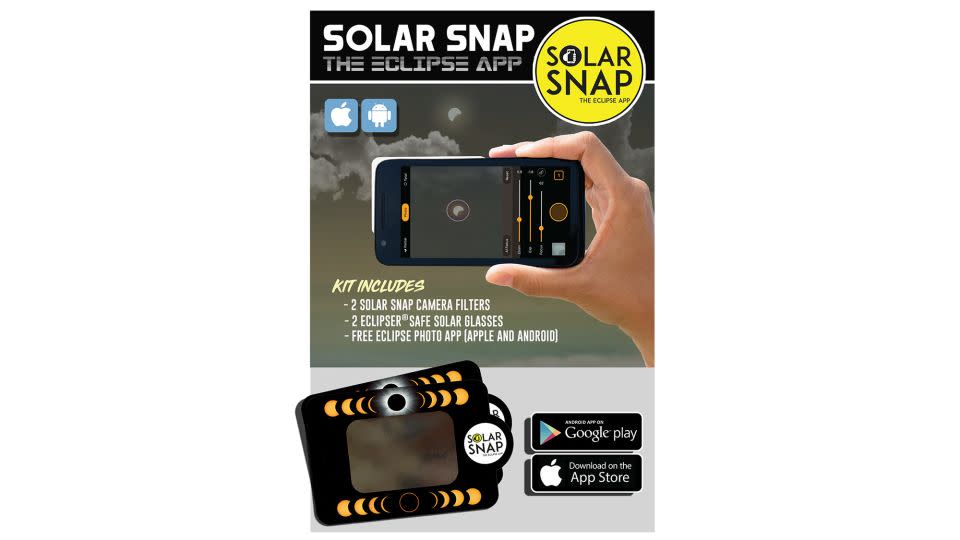
While you can purchase solar filters for traditional cameras, the Solar Snap Eclipse App and bundle is another option to consider if you're planning to photograph the eclipse with your smartphone. You can download the app and purchase two solar filters for your phone and two sets of solar eclipse glasses all at once for $19.
Celestron EclipSmart Safe Solar Eclipse Telescope and Camera Filter
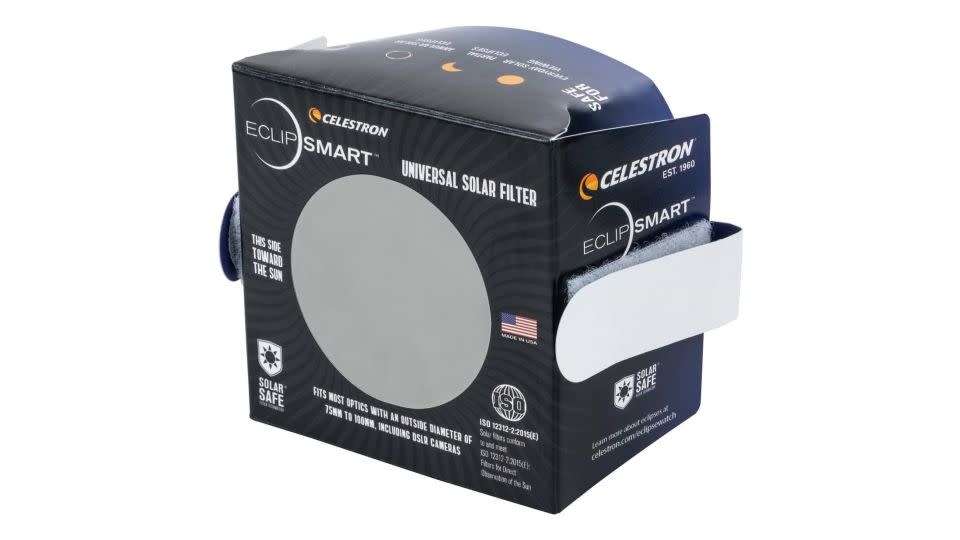
This solar filter was created to meet ISO international safety standards while also working with most sizes and types of cameras. It's affordable at less than $20, and it helps build a "soft orange" tint to photos that brings out the natural look of celestial events.
VisiSolar Smartphone Solar Imaging Enhancing Photo Lens
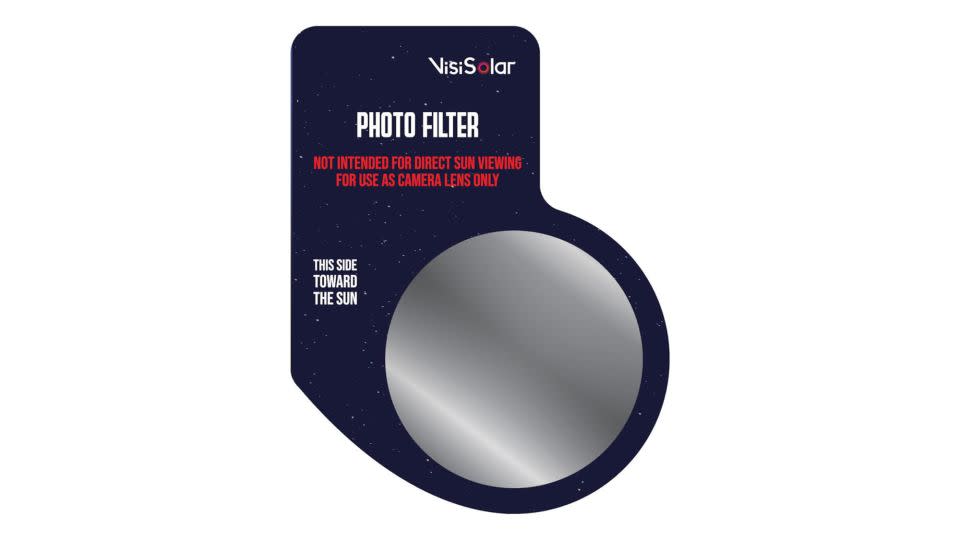
The Smartphone Solar Imaging Enhancing Photo Lens from VisiSolar is made to fit over your smartphone's camera to protect your equipment from the sun. While the instructions say you can simply hold the filter in front of your camera before snapping a picture, some reviewers said they taped it over their camera's phone for convenience instead. At less than $10, this smartphone solar filter offers an affordable way to protect your phone while snapping the perfect shot.
Kesseph Solar Eclipse Imaging Enhancing Lens Filter
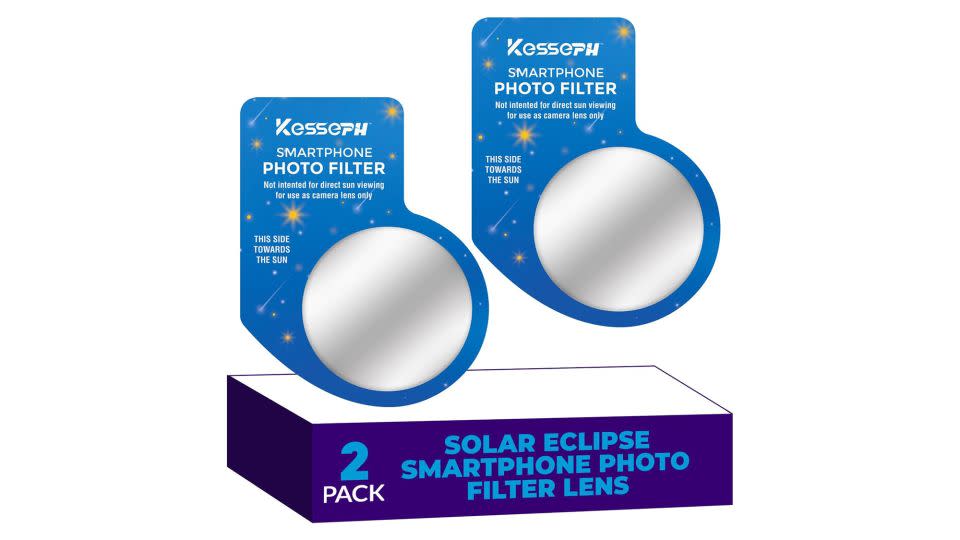
This two-pack of solar filters for your smartphone offers similar functionality. The lens protects your smartphone's camera from the sun's harmful rays, just as you protect your own vision with solar eclipse glasses. Once again, you don't need any special gear or equipment to use this lens. You can simply hold it in front of your smartphone's camera as you capture images, or you can tape it in place.
SafeShot The Solar Observatory for Your Smartphone
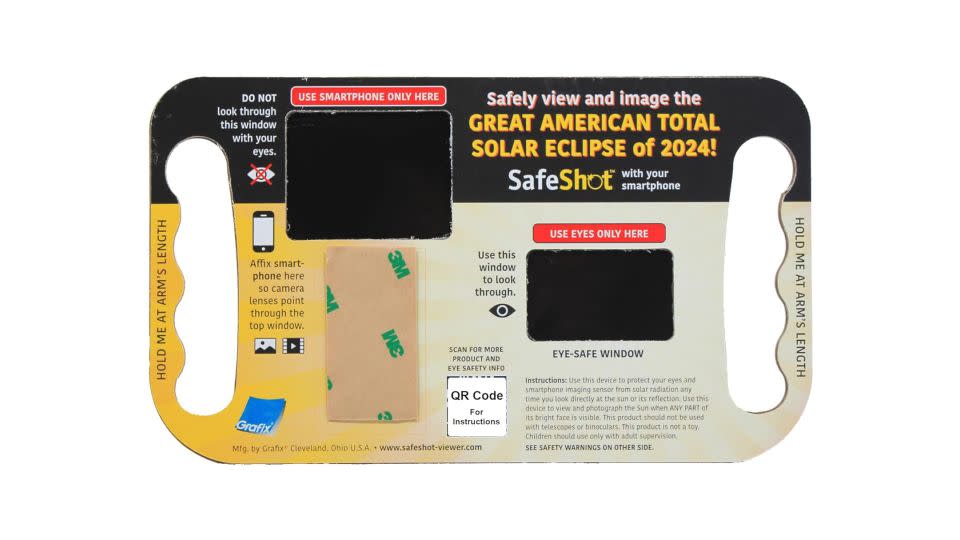
The Solar Observatory from SafeShot lets you capture images of the solar eclipse with your phone's camera while also safely viewing the eclipse on a dedicated eye-safe window. Not only does it protect your eyes from the sun, but it protects your phone's camera at the same time. You don't need any special equipment or a smartphone app to use it, and it works with nearly any device.
Sundara by Celestial Optical 49mm Solar Filter
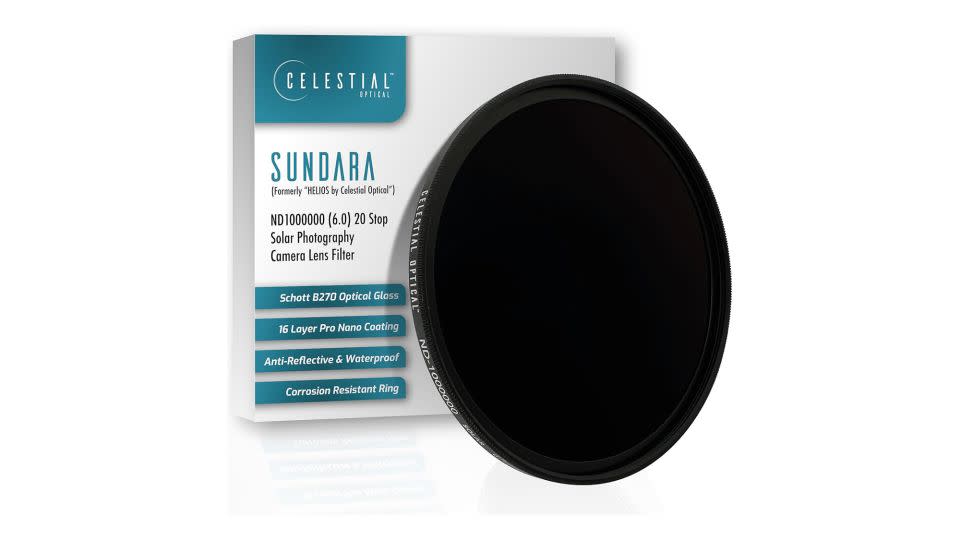
This specific solar filter for cameras or telescopes is geared to professional solar photography, including solar eclipses and other celestial events. It blocks the sun's rays while allowing cameras to take high-quality photos, and features a 16-layer nano-coating that protects it against water, dust and damage. This solar filter is made of German-made Schott B270 optical glass.
Kesseph Solar Eclipse Glasses, 10-Pack
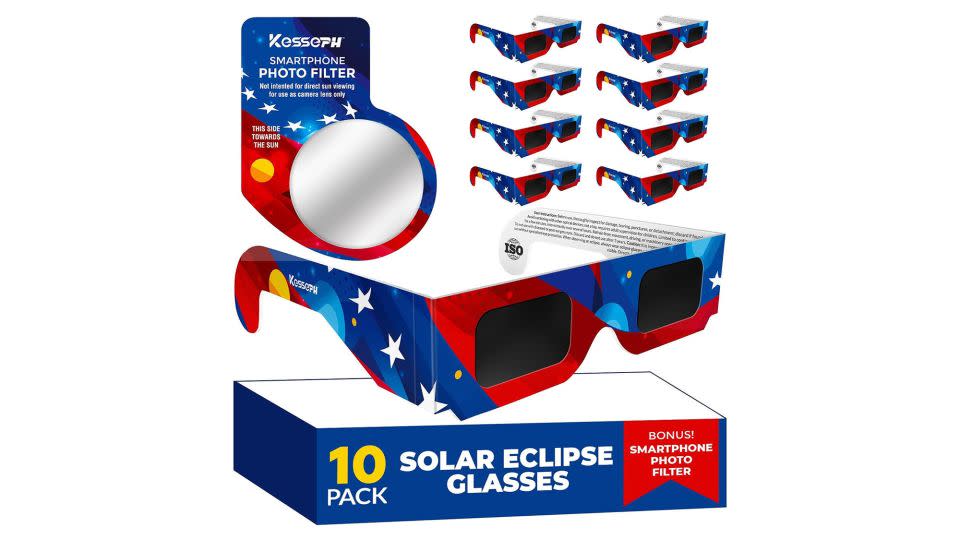
Dr. Elizabeth McGrath, who serves as associate professor of physics and astronomy at Colby College in Waterville, Maine, also says you can keep things simple with your smartphone and avoid added expenses by placing a set of solar eclipse glasses over your camera lens anytime the sun's yellow disk is visible.
But, don't use the set you plan to wear, she says. "Get a second pair to tape over your cell phone’s lens." This 10-pack of solar eclipse glasses from Amazon can fit the bill because it offers an inexpensive way to get glasses for various family members and their phones. It also comes with a smartphone solar filter to protect your phone's camera from harmful sun rays.
Sensyne Phone Tripod and Selfie Stick
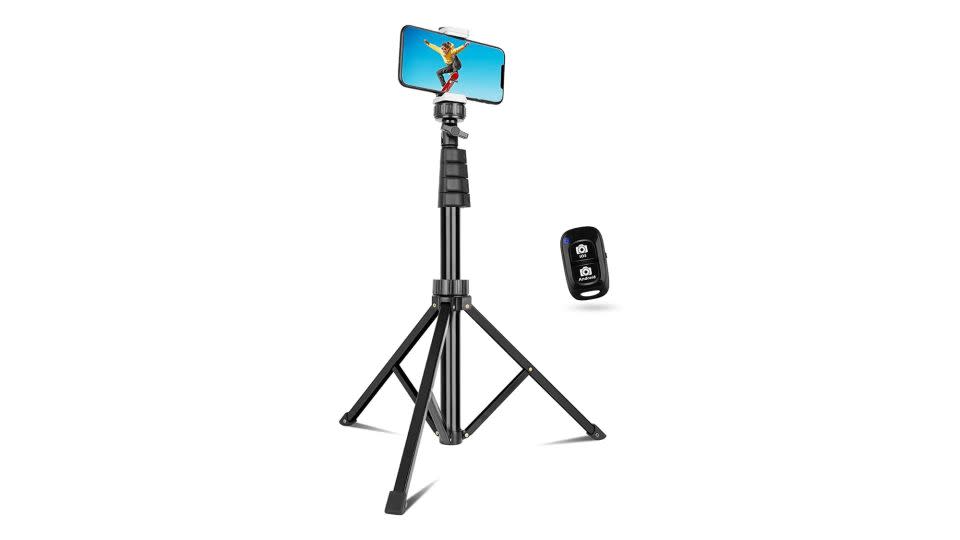
If you're planning to use your smartphone to take photos of the eclipse, having a tripod will make the process considerably easier and safer compared to holding your phone in the air while trying to protect your camera and yourself. This one is compatible with both iPhone and Android devices, and it comes with its own Bluetooth remote shutter built in. This means you can set up your phone at the angle you want, attach a solar filter and snap away at the solar eclipse with the click of a button.
Canon EF 75-300mm f/4-5.6 III Telephoto Zoom Lens
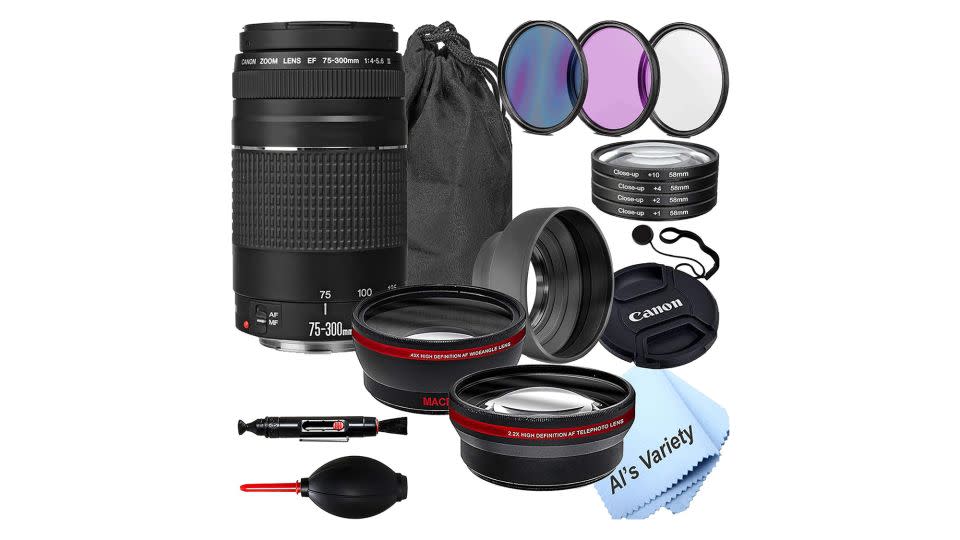
If you want to capture all the details with the eclipse filling the frame of your image, for example, a telephoto lens (specifically a 200-millimeter, 300-millimeter or 400-millimeter lens) may be your best bet. For a broader shot, Lowthian-Hanna says a wider-angle lens can be used to photograph the surroundings and other foreground and background elements, with the eclipse in the background of the shot.
The Canon EF 75-300mm f/4-5.6 III Telephoto Zoom Lens could work in either situation due to its zoom capabilities and functionality as a wide-angle lens. It's designed for use with multiple types of cameras, including the Canon EOS 1D C, the EOS 1D X, the EOS Rebel T6i and more. Not only does it come with the lens itself, but it includes a three-piece filter kit, lens pouch, cap keeper, lens dust blower, cleaning cloth and more.
Evil Eye 36X Telephoto Lens
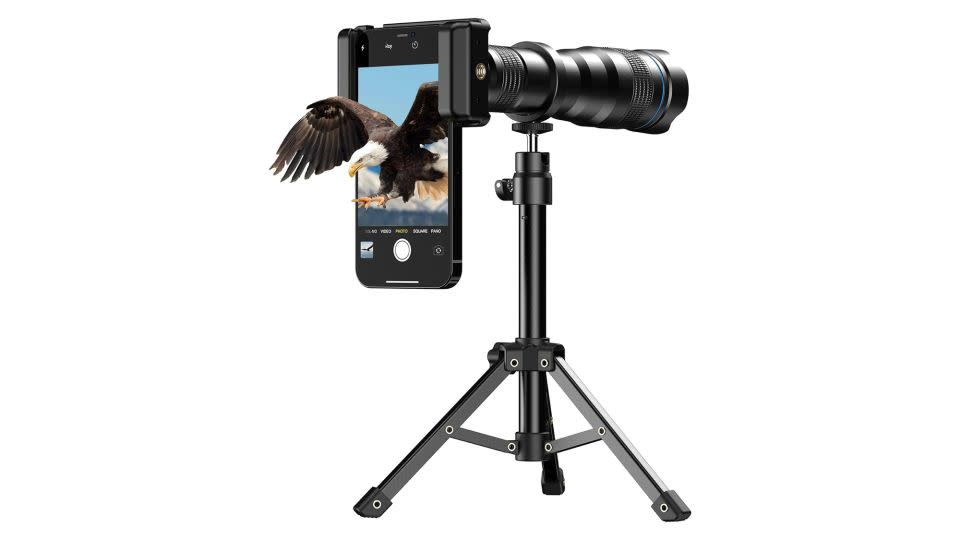
The Evil Eye 36X Telephoto Lens can increase your phone's zoom capability to help you capture better photos of the eclipse, and it also comes with its own tripod for your smartphone. This collection of tools works for most Android and iPhone devices, and it lets you take both close-up and long-range pictures with ease. Its small size also makes it easy to fold up and bring along with you as you search for the best place to see the eclipse.
EszkozTA Wireless Remote Shutter for Cellphones and Tablets 3-Pack
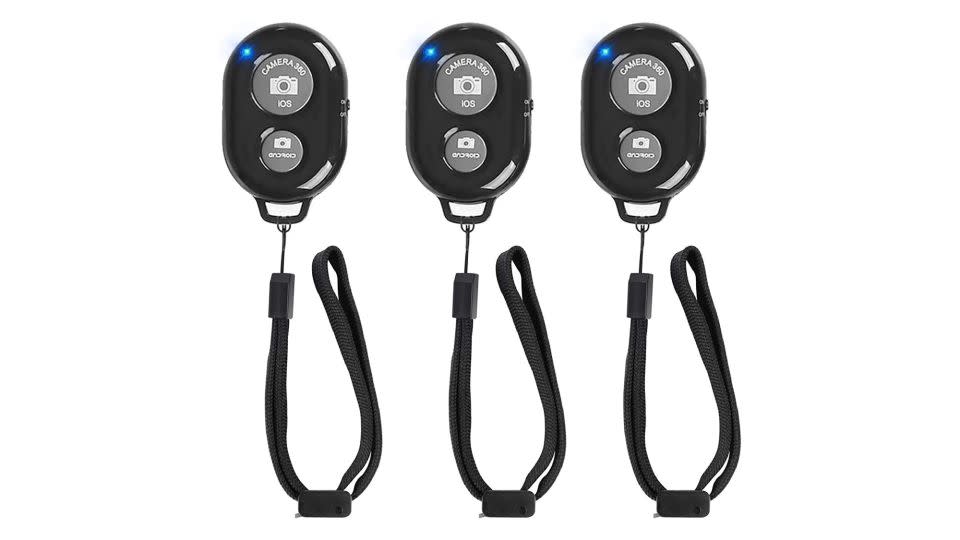
If you're using your smartphone to take photos of the eclipse and mounting your phone on a tripod, Pilachowski says a remote shutter control is helpful. You can purchase Bluetooth devices to control the shutter speed on your smartphone camera remotely, and you may want to do so ahead of time so you're ready.
This three-pack of wireless remote shutters from Amazon works for both smartphones and tablets, and it's an excellent deal at less than $10. The shutters are operational up to 30 feet away, and they let you take photos with the click of a button while you watch the eclipse (with proper eye protection) nearby.
Note: The prices above reflect the retailers' listed price at the time of publication.
For more CNN news and newsletters create an account at CNN.com

